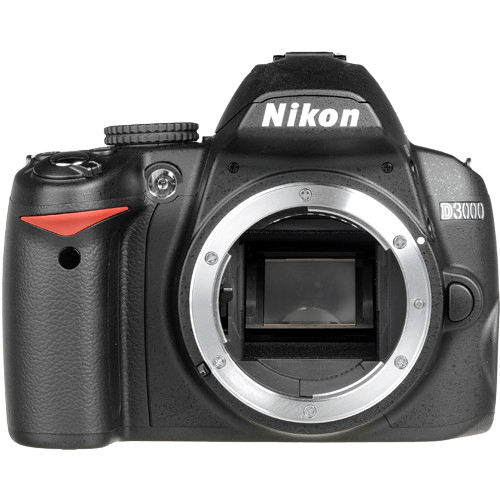Nikon D3000 Specs and Scores

The Nikon D3000 scores 36 out of 100 in our camera ranking. Introduced on April 14, 2009, this DSLR camera was priced at $730 upon release. With dimensions of 126 x 97 x 64mm and a weight of 536g (1.18lbs), the D3000’s specifications are now outdated compared to modern cameras. Despite being a reliable choice in its time, the D3000 may not be the best option for today’s photography enthusiasts.
Nikon D3000 Overview and Optics
The Nikon D3000 receives a score of 43/100 for its optics. With 12.3 megapixels, a shooting speed of 3 frames per second, and a CCD sensor type, the camera has decent specifications. The Expeed processor and a DXOMARK score of 62 for the sensor further support the camera’s performance. However, the absence of image stabilization might be a drawback for some users.
The Nikon D3000 features an APS-C sensor size and a Nikon F DX lens mount, allowing compatibility with a wide range of lenses. The camera’s aspect ratio is 3:2, which is standard for DSLR cameras. In comparison to current market offerings, the Nikon D3000 falls short in terms of megapixels and shooting speed. Many modern cameras boast higher megapixel counts and faster shooting speeds, making the D3000 less competitive.
While the Nikon D3000 has some respectable specifications, it struggles to compete with newer models on the market. The optics score of 43/100 reflects the camera’s limitations in today’s fast-paced photography world. Potential buyers may want to explore more recent offerings for better performance and features.
Nikon D3000 Video Performance
The Nikon D3000 lacks video capabilities. Unlike most cameras, it does not record video footage. This camera focuses solely on photography.
Nikon D3000 Features and Benefits
The Nikon D3000 scores 23 out of 100 in the features category. This camera comes with a 3-inch screen with a resolution of 230,000 dots. However, it does not offer modern conveniences such as a touchscreen, flip screen, GPS, WiFi, or Bluetooth connectivity.
In comparison to contemporary cameras, the D3000’s specifications seem outdated. The lack of a touchscreen and flip screen limits its usability for certain shooting scenarios, such as vlogging or taking selfies. Absence of GPS, WiFi, and Bluetooth capabilities hinders seamless location tagging, image sharing, and remote control options that many photographers find essential in today’s fast-paced digital world.
Despite its low feature score, the Nikon D3000 still provides the essential elements for capturing quality images. However, it falls short when compared to the advanced functionalities offered by newer cameras in the market.
Nikon D3000 Storage and Battery
The Nikon D3000’s storage and battery receive a score of 27/100. This camera has one memory card slot, which accepts SD and SDHC cards. In today’s market, having a single memory card slot is less competitive, as many cameras now offer dual slots for increased storage capacity and backup options.
The battery life of the Nikon D3000 allows for 500 shots per charge, which is average compared to other cameras in its class. The camera uses an EN-EL9a battery type and does not support USB charging. This may limit convenience for users who prefer to charge their devices through USB ports.
Considering these specifications, the Nikon D3000’s storage and battery capabilities are not outstanding in the current market.
